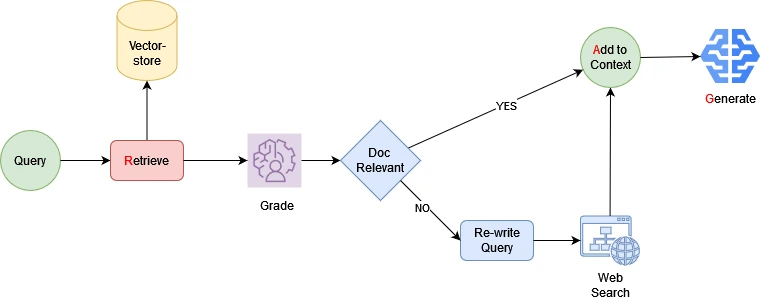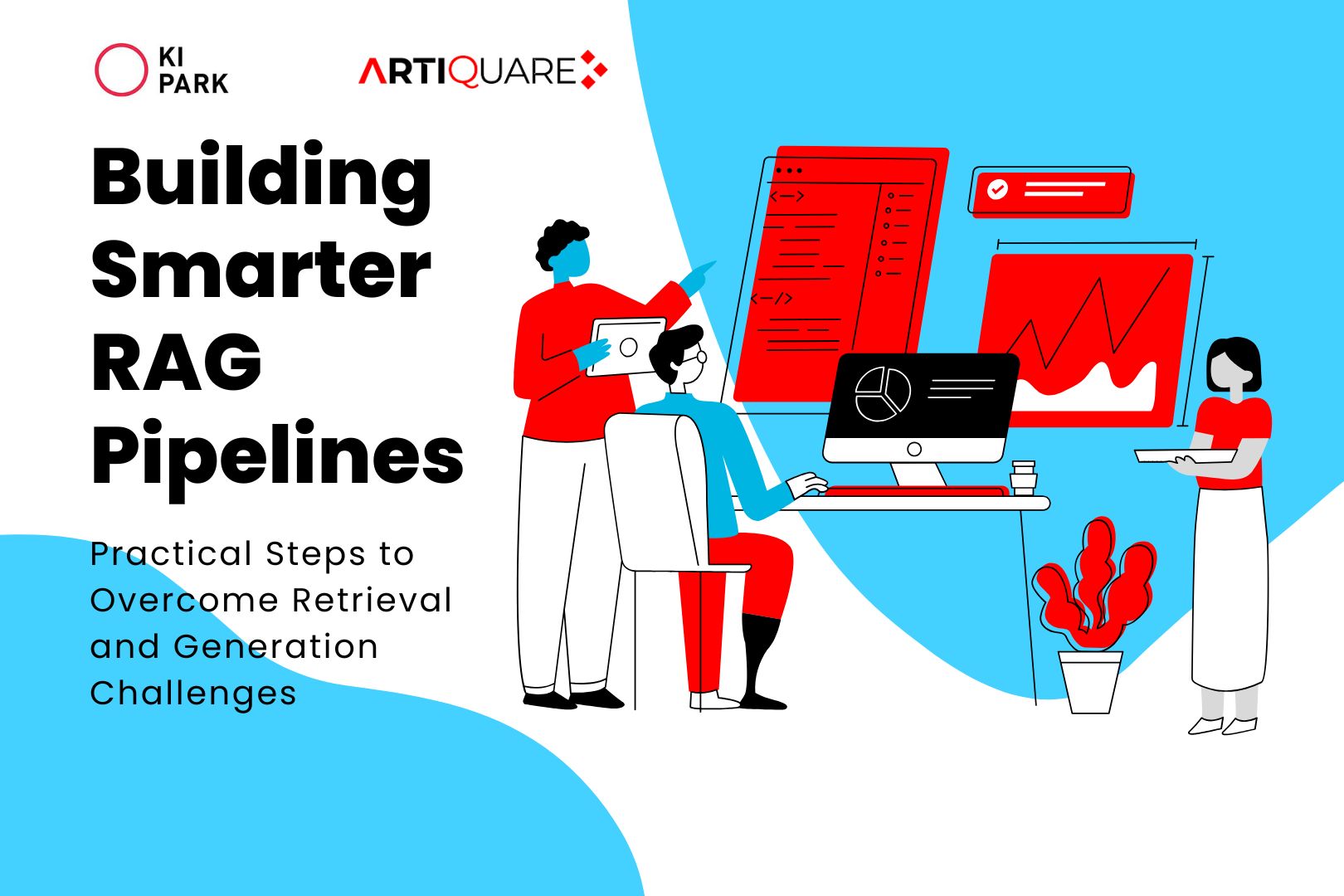Hello, tech enthusiasts and curious minds! Welcome to our latest blog post where we explore an exciting advancement in the field of AI called Corrective Retrieval-Augmented Generation (CRAG). If you’ve been following our journey, you know we’re passionate about making complex AI technologies accessible and useful in real-world applications. Today, we’re diving into how Corrective RAG, yet another advanced RAG method, can make AI systems more accurate and reliable.
What is Corrective RAG?
At its core, Retrieval-Augmented Generation (RAG) is a technique that combines the strengths of retrieving relevant information from a large dataset and generating coherent responses using AI models. Corrective RAG (CRAG) takes this a step further by integrating mechanisms to identify and correct errors in real-time, ensuring the information provided is not only relevant but also accurate.
Why Do We Need Corrective Mechanisms?
AI systems are incredibly powerful, but they aren’t perfect. Here are a few common issues they face:
- Conflicting Information: Sometimes, different data sources provide conflicting answers. CRAG helps resolve these conflicts to provide the most accurate information.
- Complex Questions: Some queries are nuanced and require a deeper understanding to answer correctly. CRAG improves the system’s ability to handle these complex queries.
- Evolving Knowledge: As new information becomes available, AI systems need to update their knowledge bases continuously. CRAG ensures that the system stays up-to-date with the latest information.
How Does Corrective RAG Work?
Corrective RAG integrates several advanced processes to enhance the reliability and accuracy of AI-generated responses. Here’s a high-level overview of how it works:
1. Retrieving Relevant Information
The system starts by retrieving documents that are relevant to the user’s question. This initial step ensures that the AI has access to the most pertinent data available.
2. Grading Document Relevance
To ensure the quality of the information, the system grades the relevance of each retrieved document. This step filters out less relevant data, focusing on the most useful information.
3. Transforming Queries
If the initial retrieval doesn’t provide sufficient information, the system can transform the user’s query to improve the search process. This helps in refining the question to get better results.
4. Performing Web Searches
If necessary, the system performs web searches to supplement the retrieved documents with the latest and most relevant information available online.
5. Generating Answers
Using the retrieved documents, the system generates a concise and coherent response. This process leverages powerful language models to produce human-like answers.

The Strategy of Using Smaller, Open-Source Models
In our approach, we leverage a combination of MoE and a smaller, 7-billion parameter (7B) open-source models like Mixtral and Mistral. Here’s why this strategy is beneficial:
- Efficiency: Smaller models require less computational power, making them faster and more cost-effective to run. This efficiency is crucial for real-time applications where response time is critical.
- Accessibility: Open-source models are more accessible to a wider range of users and developers. This openness fosters innovation and collaboration within the AI community.
- Flexibility: Smaller models are easier to fine-tune and adapt to specific tasks. This flexibility allows us to tailor the models to meet the unique needs of our applications.
- Scalability: By using efficient models, we can scale our solutions more effectively. This scalability ensures that our systems can handle increasing loads without compromising performance.
Benefits of Corrective RAG
- Improved Accuracy: By identifying and correcting errors in real-time, CRAG significantly enhances the accuracy of AI responses.
- Enhanced Reliability: The system’s ability to handle complex queries and update its knowledge base continuously makes it highly reliable.
- Better User Experience: Users get more relevant and accurate information, leading to a better overall experience with AI systems.
Conclusion
Corrective RAG represents a major leap forward in making AI systems more accurate and reliable. By integrating advanced feedback loops, error detection mechanisms, and correction protocols, we can build AI solutions that are not only intelligent but also trustworthy.
Using smaller, 7B open-source models like Mistral, we achieve efficiency, accessibility, flexibility, and scalability in our AI solutions. This strategy ensures that we provide powerful and reliable AI tools that are accessible to a broader audience.
We hope this post has given you a clearer understanding of Corrective RAG and its potential benefits. Stay tuned for more updates and insights as we continue to explore the exciting world of AI. Until next time, keep exploring and innovating!
For those interested in a deeper technical dive, check out our detailed article on Medium.





